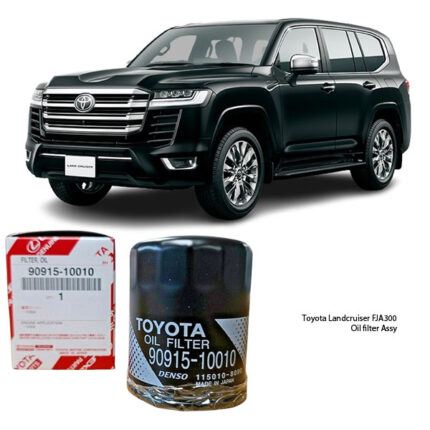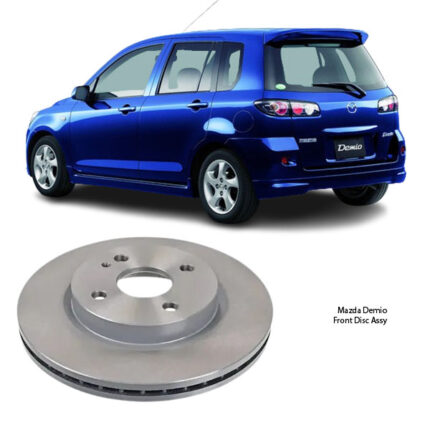-18%
Get Toyota Landcruiser FJA300 Air Filter Element Assy 17801-52021 in Kenya
In Kenya’s ever-growing automotive landscape, the air filter element assembly plays a crucial role in maintaining the overall performance and longevity of vehicles operating across diverse terrains and environments. From urban centers like Nairobi to the dusty outskirts of Turkana or the humid coastlines of Mombasa, air quality and road conditions can vary significantly. These conditions directly affect how vehicles breathe—quite literally—through their air filter systems.
What is an Air Filter Element Assembly?
The air filter element assembly is a component housed within a vehicle’s intake system, designed to clean the air before it enters the engine. Clean air is essential for the combustion process. If the air is contaminated with dust, debris, or other particles, it can cause severe damage to the engine components over time.
This assembly typically includes:
-
The filter element itself (often made from paper, foam, or cotton).
-
The filter housing or frame that holds the filter securely in place.
-
A sealing mechanism to ensure no unfiltered air bypasses the system.
Why is it Important in Kenya’s Driving Environment?
Kenya’s unique driving conditions make the air filter element assembly an especially vital component for local motorists and mechanics to pay attention to. Here’s why:
-
Dust and Particulate Matter
Many roads—especially in rural and semi-urban areas—are unpaved or frequently under construction. These environments kick up high amounts of dust that can quickly clog or damage air filters if not adequately maintained. -
Urban Pollution
Cities like Nairobi are grappling with rising air pollution levels due to increased traffic congestion and industrial activity. Soot, smoke, and microscopic particles can heavily burden the filtration system if not equipped with a high-quality filter. -
Varied Climate Conditions
The coastal humidity, central highland chill, and arid heat of Northern Kenya all affect how engines operate. In humid areas, moisture mixed with airborne contaminants can cause filters to degrade faster. Meanwhile, in dry regions, the dust load is much heavier, requiring more frequent inspection. -
Driving Habits
Stop-and-go traffic, high-revving engines, or frequent short trips can all affect how much strain is placed on the air filtration system.
Functions of a High-Quality Air Filter Element Assembly
-
Filtering Dust and Debris
The most obvious function is keeping dirt, sand, leaves, and other particles from entering the engine. -
Optimizing Engine Performance
When the engine gets clean air in the right amount, it burns fuel more efficiently, resulting in smoother acceleration and better overall performance. -
Protecting the Engine
Dust and debris can damage engine internals like cylinders, pistons, and valves. A proper filter assembly prevents abrasive particles from causing premature wear and tear. -
Improving Fuel Efficiency
Engines with clogged filters often compensate by burning more fuel. A clean air filter helps the engine operate at peak fuel economy. -
Reducing Emissions
Cleaner combustion, thanks to proper air filtration, means lower harmful emissions being released into the atmosphere.
Signs Your Air Filter Element Assembly Needs Attention
Motorists and technicians across Kenya should keep an eye out for these common indicators:
-
Reduced engine performance: Sluggish acceleration or engine misfires.
-
Decreased fuel efficiency: Filling up more often than usual.
-
Unusual engine sounds: Coughing or popping noises.
-
Black smoke from the exhaust: Indicates a rich fuel mixture.
-
Dirty or discolored filter: A visual inspection can reveal clogging or damage.
How Often Should It Be Replaced?
There’s no one-size-fits-all answer. Replacement intervals depend on the type of air filter used and the driving conditions. In more demanding Kenyan environments—like dusty rural roads or city traffic jams—it may be necessary to inspect and replace filters more frequently than in cleaner or less strenuous settings.
As a general guideline:
-
Check the air filter every 10,000 km.
-
Replace it every 15,000 to 30,000 km, or sooner if driving in harsh conditions.
Availability in Kenya
Air filter element assemblies are readily available across the country, thanks to a robust network of auto parts dealers, garages, and online platforms. Whether you’re in Nairobi, Eldoret, Kisumu, or even more remote areas, you’ll likely find suppliers carrying a range of options to meet various vehicle requirements.
Some local trends worth noting:
-
German-quality filters are gaining popularity for their durability and efficiency.
-
Aftermarket options are available and vary widely in quality.
-
OEM (Original Equipment Manufacturer) filters remain the benchmark for many vehicle owners and technicians.
-
Eco-friendly reusable filters are emerging in niche markets, especially among performance and off-road enthusiasts.
Tips for Choosing the Right Air Filter Element Assembly
-
Material Quality
Choose filters made from high-grade materials such as pleated paper, cotton gauze, or synthetic fibers. These materials offer better airflow and filtration. -
Fitment Accuracy
A properly fitting filter assembly is essential. Loose filters can allow unfiltered air into the engine, while overly tight ones can hinder airflow. -
Brand Reliability
Stick with trusted brands or suppliers with a good reputation. Poor-quality filters might save costs in the short term but lead to engine damage later. -
Check Certification
Look for filters that meet global quality standards like ISO or TUV. -
Compatibility and Ease of Installation
Whether DIY or through a professional, ease of installation can save time and money. Some filters are designed for tool-less installation, which can be handy for quick replacements.
Maintenance Tips
-
Regular Inspection: Especially before long road trips or after driving in dusty areas.
-
Keep Surrounding Areas Clean: When replacing a filter, ensure the filter housing and ducts are also clean to avoid contaminating the new filter.
-
Seal Check: Make sure the sealing gasket is intact and forms a proper seal around the edges.
-
Avoid Over-cleaning: Some reusable filters can be cleaned, but over-washing or using the wrong technique can damage them. Always follow manufacturer instructions.
Final Thoughts
The air filter element assembly is more than just a component—it’s the vehicle’s first line of defense against the harsh elements encountered on Kenya’s diverse roads. Regular maintenance and informed choices can significantly improve vehicle reliability, efficiency, and environmental friendliness.
Whether you’re a daily commuter, a fleet manager, or an off-road enthusiast, understanding and caring for this unsung hero of engine health is essential to ensuring long-term performance and peace of mind on every journey.
Follow us on Facebook for more parts.



